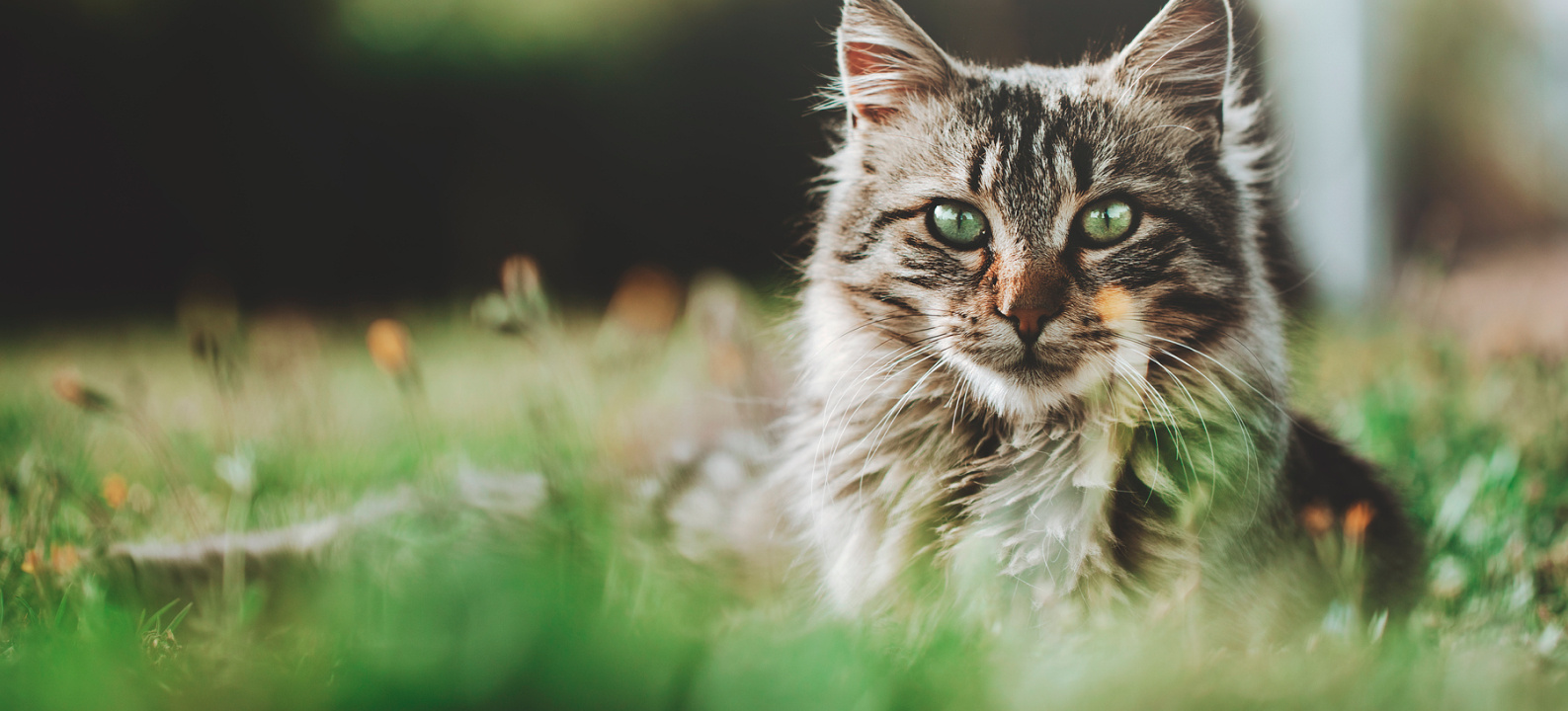

How to Take Care of a Cat
Sections
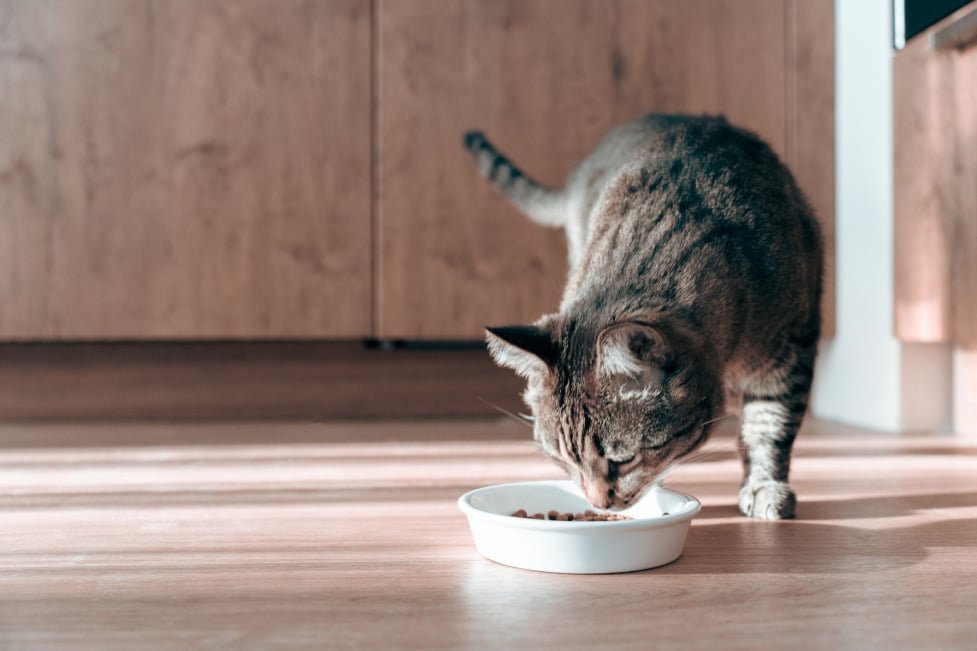
The Importance of Top-Tier Feline Care
Just like any other domesticated animal, cats need regular health check-ups, vaccinations, and shots, as well as to be fed high-quality food and have constant access to clean, fresh water. And, despite the fact that some cats can be very independent, they still need love and cuddles from you. Nights sitting on the couch catching up on the latest episodes of a show you’re watching are made all the better when you have a fluffy feline on your lap. But there is more to know for how to take care of a cat than just ensuring they have the basics.
There are a number of health conditions that cats can get that require either preventative care from cat owners or for owners to be savvy in identifying them since cats are masters of hiding any outward signs that they are uncomfortable or in pain.
In this article, we explore cat health from a broad perspective, highlighting the common ailments cats will likely experience in their lifetime.
TRI-ACTA for Pets
A proactive approach for developing and younger adult pets to maintain optimal joint health mobility, minimize inflammation and fend off age-related ailments.
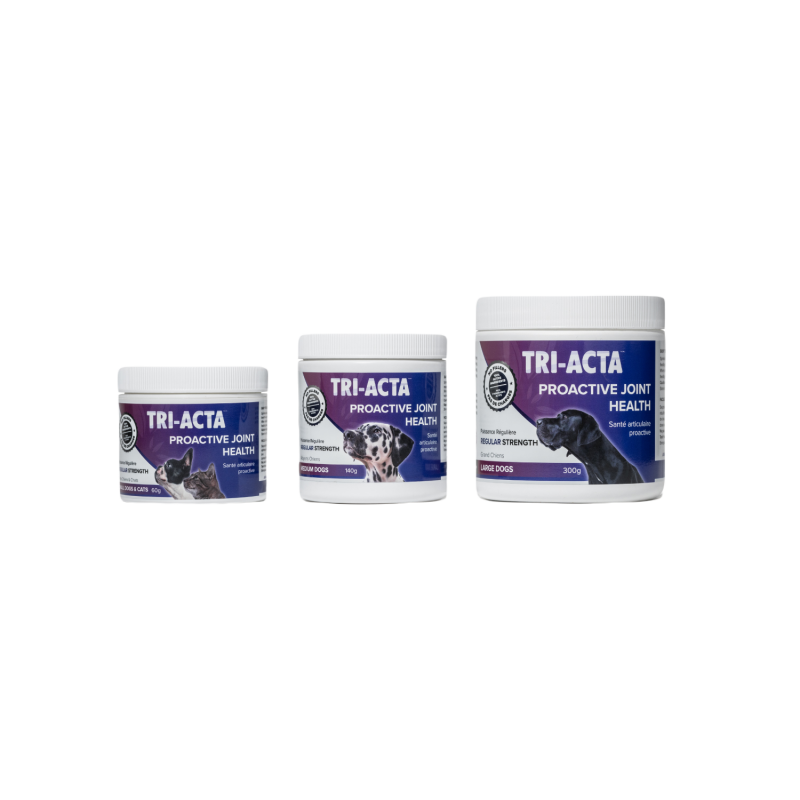
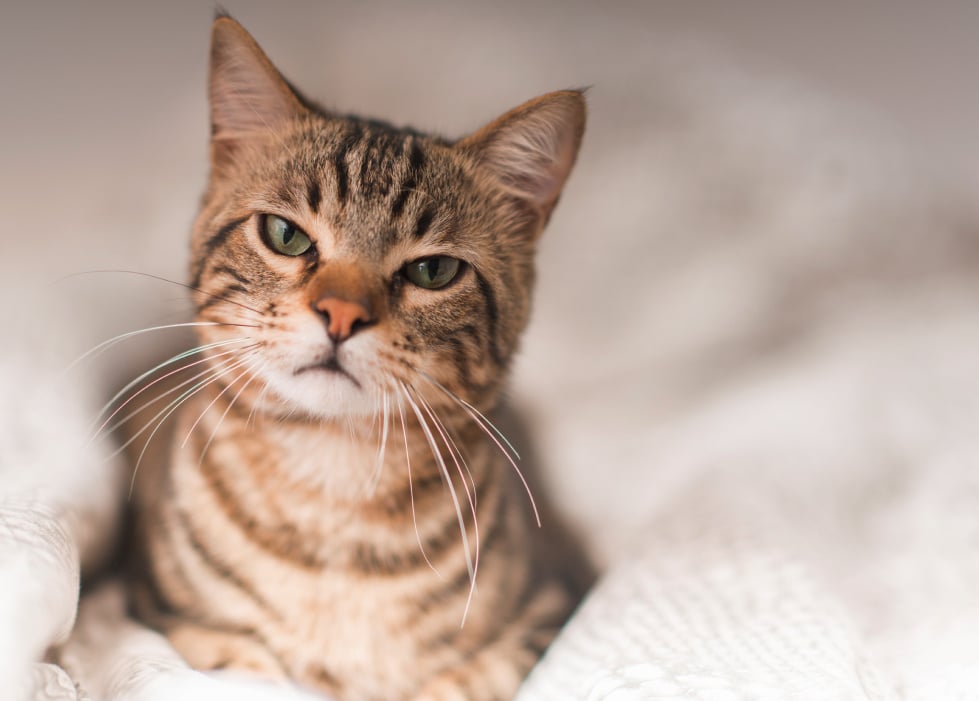
Basics of How to Take Care of a Cat
It’s always a good idea to review the basics for how to take care of a cat. While every kitty will have different health needs, this section gives you the ins and outs of cat care without complicated jargon.
Vet Selection

Selecting a veterinarian for your cat is an important decision that can significantly impact the health and wellness of your feline friend.
When considering which veterinarian to choose, it’s important to keep the following in mind:
- Qualifications and experience: Ensure the veterinarian is licensed in your province, state, or territory and has the necessary qualifications. Usually, vets will display this information freely in their clinic.
- Choose a vet with experience with cats: Given that cats are popular domestic pets around the world, it shouldn’t be too difficult to find a veterinarian with ample experience with cats. Regardless, if possible, you can always ask about their experience and compare it with other vets in your area.
- Inquire about the services offered: Ideally, you’ll want to choose a clinic that offers a wide range of services to cover all the bases related to your cat’s healthcare needs. Some examples are preventive care, diagnostics (x-ray, blood and urine testing, etc.), surgery, dental care, and emergency services. If emergency care isn’t an option, the clinic may be able to recommend a place near you in case the unexpected happens.
- Philosophy of care: Choose a vet who emphasizes preventative care and focuses on maintaining your cat’s health and wellness through the prevention of illnesses.
- Cost and payment options: The vet clinic you choose should be transparent about all costs associated with caring for your cat, including fees and payment policies. Some clinics may be able to direct bill to your insurance as well if you have it, so that’s something else to inquire about. Sometimes, vet clinics may even have payment plans for higher-cost care, such as surgeries.
- Clinic location and hours of operation: Selecting a vet clinic that’s near your home is a good idea, as it will be easier to transport your cat back and forth and get to the clinic for regular check-ups and, if need be, emergencies. Consider the clinic’s hours of operation as well and ensure they fit within your typical schedule.
Vaccinations
Core vaccinations for a cat include:
- Rabies
Feline distemper (also called panleukopenia, this disease has a damaging effect on white blood cells) - Feline calicivirus (this disease causes a mild to severe respiratory infection and oral disease in cats)
- Feline herpesvirus type I (also called rhinotracheitis, this disease causes fever, sneezing, inflamed eyes, inflammation of the nose lining, and excessive salivation)
- Kittens also receive a vaccination for the Feline leukemia virus (abbreviated to FeLV). This disease causes lethargy and fever in the early stages and affects the white blood cells, eventually leading to death without treatment. However, this is only for kittens, not adolescent or adult cats.
Optional vaccinations for cats, which are recommended by vets where these diseases might pose a greater risk depending on the area or the cat’s lifestyle (or both), include:
- Chlamydophila felis (helps prevent feline chlamydiosis, a chronic respiratory infection)
- Bordetella bronchiseptica (helps prevent feline bordetellosis, a respiratory disease caused by the bacteria Bordetella bronchiseptica)
Cat Dental Care

Just like we brush our teeth every day, cats need regular dental care, too! Dental disease in cats is extremely common, but the good news is that if you do some simple things to help prevent the buildup of plaque—which is the bacteria that, if left for too long, can get into your cat’s teeth and gums and cause all sorts of problems.
Common cat dental health problems that are caused by plaque (and subsequently tartar, once the plaque hardens) buildup on the teeth include:
- Gum (periodontal) disease: Inflammation and infection of the gums and tissue surrounding your cat’s teeth. Can result in tooth loss if left untreated.
- Gingivitis: Inflammation of the gums and tissues, but not as serious of a condition as periodontal disease. Can be corrected with professional dental cleaning.
- Periodontitis: The most serious of the listed conditions, where permanent damage is done to the tissues surrounding the cat’s teeth. This occurs when plaque and tartar buildup are left for a long period of time. This condition can also occur in kittens.
Some things that you can do at home to help prevent the buildup of bacteria on your cat’s teeth include:
- Regular brushing. Start with a small children’s toothbrush or invest in a silicone finger toothbrush designed for pets (many cat owners find the finger toothbrush easier because you can get into all the nooks and crannies in your cat’s mouth, but they can also bite down on it). Start with small, minute-long sessions and then gradually increase the time spent brushing. Over time, your cat will become used to brushing, and the process will get easier.
- Dental rinse or water additive. Dental rinses work by squirting a small amount of the liquid into your cat’s mouth. There are also water additives that you can use that are completely flavourless, but they won’t work if you use a cat fountain.
- Dental chews. These treats (keyword treats) are designed to remove excess plaque buildup on your cat’s teeth. Plus, your cat will likely love eating these treats because the texture and flavour are similar to regular treats. However, it’s important to note that these treats have additional calories and other ingredients that contribute to your cat’s overall diet.
Fleas, Ticks, & Heartworm
Ensuring your cat is protected from fleas, ticks, and heartworms is essential for its health and comfort. Even if your cat doesn’t go outside, it can still be exposed to these parasites from other pets, plants, or items brought into the home. Here's a comprehensive overview of these common parasites, including prevention and treatment options.
Fleas are small, wingless insects that feed on the blood of animals. They can cause significant discomfort and health issues for cats. Fleas go through four stages: egg, larva, pupa, and adult. They can multiply rapidly, with a single flea laying hundreds of eggs.
Feline health risks related to fleas:
- Itching and scratching due to flea bites can lead to skin irritation and infection.
- Some cats are allergic to flea saliva, resulting in dermatitis or severe skin reactions.
- Heavy flea infestations can lead to amenia in cats, especially in kittens or older cats.
- Fleas can sometimes carry tapeworm larvae, which cats may ingest while grooming.
Prevention and treatment for fleas include:
- Topical treatments: Apply monthly spot-on treatments, such as fipronil, imidacloprid, or selamectin, to kill and repel fleas.
- Oral medications: Use oral flea preventatives like nitenpyram or spinosad, which kill adult fleas quickly.
- Environmental control: Regularly clean and vacuum your home, wash bedding, and use flea sprays or foggers to eliminate fleas from the environment.
- Flea combs: Regularly comb your cat with a flea comb to remove fleas and flea dirt.
On the other hand, ticks are a bit more common than fleas because they exist everywhere—high grass, sand, sheds, even debris in your yard—which means they can easily attach to your cat. Ticks are arachnids that attach to animals to feed on their blood. They can transmit various diseases to cats. They have four stages in their lifecycle: egg, larva, nymph, and adult. Depending on the species and environment, they can live for several months to years.
Feline health risks related to ticks:
- Ticks can transmit diseases such as cytauxzoonosis (a serious infection that causes a range of issues from depression, lethargy, anorexia, and fever), tularemia (a bacteria disease where symptoms can range from none at all to severe reactions like open sores, diarrhea, coughing, and more), and Lyme disease (a bacterial infection that can cause lameness, fever, loss of appetite, fatigue, difficulty breathing, and more).
- Ticks can also cause anemia from blood loss, especially if the cat has many ticks on their body.
- Tick bites can also cause local skin irritation and secondary infections.
Prevention and treatment for ticks include:
- Tick preventatives: Use monthly topical treatments or collars containing ingredients like fipronil, flumethrin, or permethrin (for dogs, not cats) to repel and kill ticks.
- Regular checks: Frequently check your cat for ticks, especially if they go outdoors. Remove ticks promptly with tweezers or a tick removal tool.
- Environmental control: Keep your yard tidy, mow the lawn, and remove leaf litter to reduce tick habitats.
In addition to fleas and ticks, the heartworm is a parasitic worm (scientifically known as Dirofilaria immitis) that affects the heart and lungs when it enters a cat’s body. The heartworm larvae can be transmitted to mosquitoes, which mature into adult worms within the cat’s heart and pulmonary arteries.
Feline health risks related to heartworms:
- Heartworms can cause severe respiratory problems, coughing, and difficulty breathing.
- Advanced cases of heartworm infection can lead to heart failure and other cardiovascular issues.
- Severe cases of heartworm infection can be fatal.
Prevention and treatment for heartworm include:
- Preventative medications: Use monthly heartworm preventatives like ivermectin, milbemycin, or selamectin. These medications also often protect against other parasites.
- Testing: Annual blood tests for heartworms are recommended to ensure early detection and treatment.
- Treatment: If your cat is diagnosed with heartworm, treatment involves managing symptoms and may require veterinary intervention. Unlike in dogs, adult heartworm treatment in cats is risky, so prevention is crucial.
Cat Nutrition
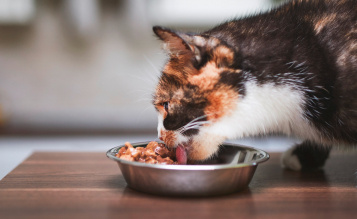
When it comes to how to take care of a cat, feeding may seem straightforward—just buy cat food and serve it. However, it's important to choose high-quality options.
Cats need a protein-rich diet with balanced vitamins, minerals, fats, and carbohydrates. Look for a nutrition statement on the label to determine if the food is a complete diet or for supplemental feeding (treats). This distinction is crucial, as many varieties of dry and wet cat food exist.
Reading labels is essential. Ingredients are listed by quantity, with the main ingredient first. You'll see terms like meat, meat byproducts, and meals, which can be confusing. Understanding these labels helps you make informed choices for your cat's nutrition.
Here’s a quick breakdown:
|
Cat Food Ingredient |
What it Means |
|
Meat or poultry |
The flesh of the animal which may include fatty tissue, sinew, gristle, and other components commonly found in the flesh. |
|
Meat or poultry byproducts |
Includes organs, fatty tissues, and bones, but not hair, fur, teeth, or hooves. With poultry, byproducts can mean that the food contains feet or heads. |
|
Meals |
Includes blood, hair, hooves, horns, and the skin or hide of the animal. |
|
Byproduct meals |
The furthest down the line of animal products that pet food can contain, byproduct meals can include stomach contents, feathers, and, in some cases, manure. |
Joint Supplements
Cats can suffer from a wide range of joint conditions in their lifetime. We’ll get into more specifics later in this article, but conditions like arthritis and degenerative joint disease are extremely prevalent in cats despite their reputation for being unstoppable acrobats.
While sometimes genetics and breed can exacerbate joint issues, one of the best ways to help prevent your cat from developing a joint condition is to incorporate a daily joint supplement into its diet.

TRI-ACTA is a great option that you can start giving to your cat from kittenhood. This supplement contains essential ingredients to boost joint health, including:
|
Ingredient |
What it Does for Your Cat’s Joint Health |
|
Glucosamine HCl and Sulfate |
By combining these two types of glucosamine in one supplement, you’re ensuring that your cat is getting the maximum joint support. |
|
Chondroitin Sulfate |
Works in tandem with glucosamine to provide cartilage support, including repair and regeneration. |
|
Methylsulfonylmethane (MSM) |
Methylsulfonylmethane (MSM) |
TRI-ACTA contains 100% natural ingredients with no fillers, additives, or preservatives, which means that your cat gets the maximum therapeutic benefit from each dose. With some supplements, you might be paying for fillers and calories that don’t benefit your cat’s joints. Learning how to read a supplement label is important so you can be sure you’re getting the most bang for your buck.
TRI-ACTA is also tasteless, and dosages are small, so they can be easily mixed into your cat’s normal wet or dry food with no disruption to its original texture and smell.
TRI-ACTA for Pets
A proactive approach for developing and younger adult pets to maintain optimal joint health mobility, minimize inflammation and fend off age-related ailments.

Essential Cat Products
Cats need a variety of different products to help them be comfortable, safe, and happy in your home. These include:
1. Litter Box

- A standard, open litter box made of plastic or steel is best. Make sure the litter box you get is also big enough for your kitty. A good rule of thumb is to get a litter box that’s bigger than you think your cat needs (it can’t ever be too big!)
- Covered litter boxes are available, but they can make some cats feel too confined (not to mention they trap smell).
- Automatic cleaning litter boxes are convenient, but they are often covered and have mechanical parts that need to be cleaned, which might scare your kitty.
2. Litter

There are a wide range of options when it comes to cat litter. Standard clay clumping litter is fine for most cats, but for kitties with respiratory issues, these litters are often dusty. There are also wood pellets, silica gel pellets, paper pellets, and much more.
You may have to experiment with a few different varieties before finding one that works for your budget and your cat.
3. Cat Bed

Your kitty will love having places around your home that are specifically for them to feel safe and sleep.
Watch your kitty and see where they like to sleep or hang out, and put a cat bed in that area to give them extra comfort.
4. Identification
There are a couple of ways you can ensure that your cat is identifiable if they ever get lost:
- Get them a microchip. This is a small rice-sized component surgically placed between your kitty’s shoulder blades. It’s a simple and painless procedure. If your cat gets lost, a vet or rescue organization can scan it to bring up your information so they can contact you.
- Get them a collar with a charm. Another way to help people identify your cat is to get them a collar with a plastic or metal charm with your information written on it. This is available at most pet stores or through most municipalities through registration.

5. Food and Water Bowls

Of course, you’ll want to get your kitty food and water bowls for their meals. You should always make sure your cat has access to fresh water.
Most cat owners like to invest in a cat fountain since cats often like running water, which retains its freshness more.
Ceramic or stainless steel bowls are also a good investment, as they retain less bacteria compared to plastic.
6. Food and Supplements

Choosing the right cat food for your cat will require some trial and error and research (later in this article, we discuss different types of cat food and what makes up a healthy cat food diet). There are dry food, wet food, and raw food options. Most cat owners will feed their cats dry and wet food to ensure that they get enough water in their daily diet, but individual cat needs may vary.
It’s always a good idea to start your cat on a joint supplement, as many cats will end up suffering from degenerative joint disease, especially in their later years. If you have a kitten or an adult cat that is not yet experiencing joint issues, a daily dose of TRI-ACTA is a great preventative measure. For cats that already have some joint degradation or signs of arthritis, TRI-ACTA H.A., which adds hyaluronic acid for joint lubrication, is a better option.
TRI-ACTA H.A. for Pets
Our maximum strength formula is optimally designed to accelerate the formation of cartilage, minimize inflammation, expedite the healing process, and improve joint conditions.

Cat Grooming

Grooming is essential to cat care, contributing to your cat’s health, comfort, and well-being.
Regular grooming helps keep your cat's coat and skin healthy, reduces the risk of health issues, and strengthens the bond between you and your feline friend.
Here are some essentials for cat grooming to keep in mind:
1. Brushing
- Frequency: Brush your cat regularly, ideally daily for long-haired breeds and several times a week for short-haired breeds.
- Benefits: Brushing removes loose hair, reduces shedding, prevents matting, and stimulates the skin, promoting healthy hair growth.
- Tools: Use appropriate brushes and combs for your cat’s coat type. Slicker brushes, bristle brushes, and combs with both wide and narrow teeth are commonly used.
2. Bathing
- When to bathe: Cats are generally good at keeping themselves clean, so bathing is only necessary when they are particularly dirty, have gotten into something sticky or harmful, or have a medical condition requiring regular baths.
- Procedure: Use a cat-specific shampoo, lukewarm water, and ensure a calm environment. Avoid getting water in the ears and eyes.
- Drying: Towel-dry your cat thoroughly and use a blow dryer on a low, cool setting if your cat tolerates it. Ensure they are kept warm until fully dry.
3. Nail Trimming
- Frequency: Trim your cat’s nails every few weeks to prevent overgrowth and minimize scratching damage.
- Tools: Use a cat-specific nail trimmer or human nail clippers.
- Technique: Gently press the paw to extend the claws, trim only the sharp tip, and avoid cutting into the quick (the pink part of the nail with blood vessels).
4. Ear Cleaning
- Frequency: Check and clean your cat’s ears about once a month or more if they have a history of ear issues.
- Procedure: Use a vet-recommended ear cleaner and cotton balls or gauze. Avoid using cotton swabs as they can damage the ear canal.
- Signs of problems: Look for signs of infection, such as redness, foul odor, excessive wax, or discharge, and consult your veterinarian if you notice any issues.
Cat Enrichment
Mental health plays a big role in how to take care of a cat. Enrichment is essential for mental and physical stimulation, which can help prevent boredom, reduce stress, and promote overall health. Here are various ways to provide enrichment for your cat:
1. Interactive Toys
- Wand toys: Feather wands and other dangling toys can simulate hunting and prey-catching, encouraging active play.
- Laser pointers: Can provide great exercise, but always end the session with a tangible toy to prevent frustration.
- Puzzle toys: Toys that dispense treats or require problem-solving can stimulate your cat’s mind and provide physical exercise.

2. Climbing and Perching

- Cat trees and towers: Multi-level structures provide climbing, perching, and scratching opportunities.
- Window perches: Window perches or beds allow your cat to watch the outside world, which can be very entertaining.
- Shelves and ramps: Install shelves or ramps on walls to create vertical space for your cat to explore.
3. Scratching Posts
- Variety: Provide scratching posts of different textures and orientations (vertical and horizontal) to satisfy your cat’s natural scratching behavior.
- Placement: Place scratching posts in areas where your cat likes to scratch, such as near sleeping areas or furniture.

4. Hiding Places

- Boxes and tunnels: Cats love hiding in boxes, tunnels, and paper bags. These provide safe spaces for them to retreat and play.
- Cat beds and cat trees: Cozy, enclosed beds and cat trees with hideouts and high places to perch can give your cat a sense of security and comfort.
5. Sensory Stimulation
- Catnip and silvervine: Many cats enjoy the stimulating effects of catnip or silvervine. These can be used in toys or sprinkled on scratching posts.
- Aromatherapy: Safe scents like chamomile or lavender can have a calming effect on cats.
- Textures and surfaces: Provide your cat with a variety of textures, such as different types of fabrics or surfaces, for it to explore.

6. Hunting and Foraging

- Food puzzles: Encourage natural hunting behaviors by using food puzzles or hiding treats around the house.
- Interactive feeders: Use slow feeders or treat-dispensing toys to make mealtime more engaging.
7. Social Interaction
- Playtime: Spend regular time playing with your cat using interactive toys to strengthen your bond.
- Petting and grooming: Regular petting and grooming sessions can be soothing and enjoyable for your cat.
- Companionship: Some cats benefit from having a feline companion, but introductions should be gradual and carefully managed.

8. Environmental Enrichment

- Viewpoints: Ensure your cat has access to windows where they can watch birds, squirrels, and other outdoor activities.
- Outdoor enclosures: If possible, provide a safe outdoor enclosure (catio) where your cat can experience the outdoors without risks.
- Rotation of toys: Regularly rotate your cat’s toys to keep their interest and prevent boredom.
9. Training and Mental Challenges
- Clicker training: Use clicker training to teach your cat tricks or commands, providing mental stimulation and strengthening your bond.
- Agility courses: Set up mini agility courses with obstacles to challenge your cat physically and mentally.

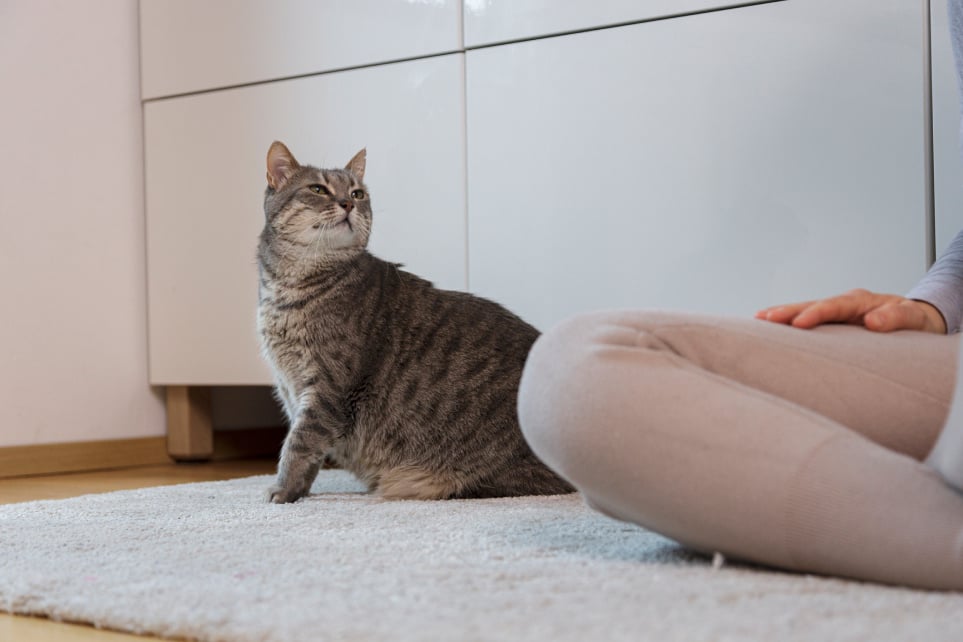
Cat Anatomy 101
Now that we’ve gone through some essentials for how to take care of a cat, let’s get into some basics about cat anatomy. This is important to know because cat bones can be complicated, and understanding a bit more about how they work will give you insight into why giving your kitty joint supplements is so important.
Cat Bones
The cat skeleton provides flexibility, strength, and agility, allowing them to be excellent hunters and climbers. Cats have approximately 230 bones in their bodies, although the exact number can vary slightly depending on the length of their tail and the number of toes they have (some cats can be polydactyl, which means that they have extra toes).
Skull

- Shape and function: Compared to many other animals, the cat's skull is shorter and more rounded, strengthening and supporting powerful jaw muscles.
- Teeth: Cats have 30 adult teeth designed for hunting and eating meat, including sharp canines for capturing prey and shearing teeth for cutting through flesh.
Cat Spine and Tail

- Vertebrae: Cats have 7 cervical (neck), 13 thoracic (chest), 7 lumbar (lower back), 3 sacral (pelvic), and typically 22-23 caudal (tail) vertebrae. This gives them a long, flexible spine.
- Function: A cat’s spine allows for great flexibility and agility, essential for jumping, climbing, and hunting. The tail helps with balance and communication.
Limbs

- Forelimbs: Cats have highly flexible shoulders, allowing a wide range of motion. Their forelimbs are used for hunting, climbing, and grooming.
- Hind limbs: The powerful hind limbs are crucial for jumping and running. Cats have a unique structure in their hind legs that gives them powerful leaps.
Paws

- Structure: Each paw has five toes, but the front paws have an additional vestigial toe known as the dewclaw, which doesn't touch the ground.
- Function: Paws are equipped with retractable claws used for hunting, climbing, and self-defense. The pads help with silent movement and provide cushioning.
Bones and Joints

- Bone density: Cat bones are dense and lightweight, contributing to their agility and ability to absorb impacts from jumps.
- Joints: Their joints are extremely flexible, particularly in the spine and limbs, which aids in their ability to perform acrobatic movements.
Growth and Development

- Kitten bones: At birth, kittens' bones are softer and more flexible, gradually hardening as they grow. Proper nutrition, particularly calcium and phosphorus, is crucial for healthy bone development.
- Aging cats: As cats age, their bones can become more brittle, leading to a higher risk of fractures and arthritis. Giving your cat a joint supplement like TRI-ACTA is a great way to help prevent joint issues from occurring as your cat ages.
[product-calllout-2]
Cat Achilles Tendon
The Achilles tendon, also known as the calcaneal tendon, is a critical structure in cats that plays a vital role in their movement and agility.
1. Anatomy and Structure
The Achilles tendon is located at the back of the cat’s lower hind leg. It connects the calf muscles (gastrocnemius, soleus, and plantaris) to the heel bone (calcaneus). Like other tendons, the Achilles tendon is composed of tough, fibrous connective tissue. It is designed to withstand significant stress and strain.
2. Function
The Achilles tendon is crucial to the cat's ability to walk, run, and jump. It facilitates the extension of the hind leg, allowing the cat to push off the ground with great force.
The elasticity of the tendon helps store and release energy efficiently, contributing to the cat’s remarkable jumping ability and swift movements.
3. Common Issues
- Tendonitis: Inflammation of the Achilles tendon, known as tendonitis, can occur due to overuse or injury. It causes pain and may limit the cat’s ability to move comfortably.
- Rupture or tear: A severe injury can lead to a partial or complete Achilles tendon rupture. This often results from a traumatic event, such as a fall or a car accident.
- Degenerative conditions: The tendon can degenerate over time due to aging or underlying medical conditions, leading to weakness and increased susceptibility to injury.
4. Symptoms of Achilles Tendon Problems
When issues arise with the Achilles tendon, it can significantly impact a cat’s mobility and comfort. Here are the key symptoms to watch for:
- Abnormal gait: The most noticeable symptom is limping or lameness in the affected hind leg. The cat may avoid putting weight on the leg or have an altered gait.
- Walking on toes: Cats with Achilles tendon issues might walk on their toes or with a dropped hock, making them appear to be on tiptoe.
- Localized swelling: There may be visible swelling around the tendon area, which is typically at the back of the lower hind leg near the heel.
- Pain response: The affected area may be painful to touch, and the cat might react by pulling away, vocalizing, or showing signs of distress when the area is palpated.
- Reluctance to move: Cats with Achilles tendon problems may be reluctant to jump, run, or climb. They might prefer to stay in one place or move very cautiously.
- Deformed tendon area: In cases of severe injury, such as a rupture, there may be a visible gap or bulge in the tendon area, indicating a complete or partial tear.
- Dropped hock: The cat may exhibit a dropped hock, where the heel is lower to the ground, indicating a significant issue with the tendon.
- Changes in grooming: A cat in pain might groom excessively around the affected area or avoid grooming altogether due to discomfort.
- Reduced activity: The cat may show a decrease in usual activities, such as playing or climbing, and might spend more time resting.
- Muscle wasting: Over time, the muscles in the affected leg may begin to atrophy (shrink) due to disuse, leading to a noticeable difference in muscle mass compared to the healthy leg.
- Difficulty standing or rising: Cats with Achilles tendon problems might have difficulty rising from a lying or sitting position. They may appear unstable or wobbly when attempting to stand or walk. There may also be noticeable stiffness in the hind leg, particularly after periods of rest.
Treatment for Achilles tendon includes:
- Rest and immobilization: For minor injuries, rest and immobilization of the affected leg are often recommended to allow the tendon to heal.
- Medication: Anti-inflammatory medications and pain relief can help manage symptoms.
- Supplements: Joint supplements can be used in conjunction with anti-inflammatory medications or on their own as a treatment for achilles tendon. Over time, the supplement will help stengthen the joint and improve mobility for your cat.
- Surgery: In cases of severe rupture or tear, surgical intervention may be necessary to repair the tendon. Post-surgical rehabilitation includes restricted activity and physical therapy.
- Physical therapy: Gentle exercises and physical therapy can aid in the recovery process by restoring strength and flexibility to the tendon.
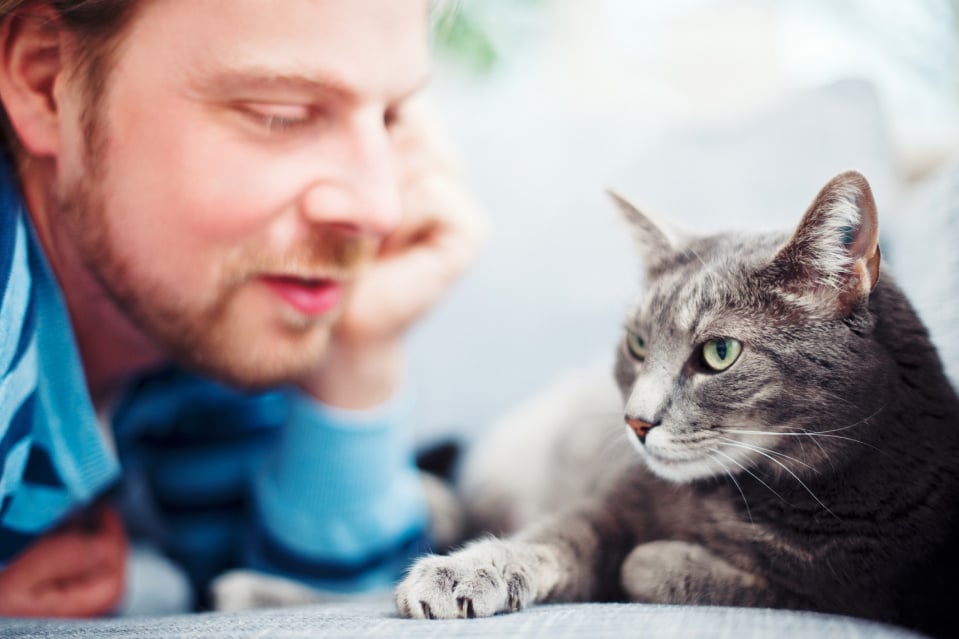
Understanding a Healthy Cat Diet
A balanced diet is crucial for maintaining your cat’s health and well-being. Here’s an overview of what constitutes a healthy cat diet, the different types of cat food, supplements, treats, and how to care for underweight and obese cats.
Types of Cat Food
A balanced diet is crucial for maintaining your cat’s health and well-being. Here’s an overview of different types of cat food and the advantages and disadvantages of each:
|
Type of Cat Food |
Advantages |
Disadvantages |
|
Dry food (kibble) |
Convenient, has a longer shelf life, helps with dental health by reducing tartar buildup. |
Less moisture content can contribute to dehydration if not balanced with sufficient water intake. |
|
Wet food (canned) |
High moisture content, which helps with hydration. Often more palatable to cats and can be beneficial for cats with urinary or kidney issues. |
More expensive, shorter shelf life once opened, can contribute to dental issues if used exclusively. |
|
Mimics a natural diet, high in protein, and can be highly palatable. |
Risk of bacterial contamination, requires careful preparation and handling, and can be expensive. |
|
|
Freeze-dried and dehydrated food |
Long shelf life, retains nutritional content, and can be more convenient than raw diets. |
Expensive and some varieties require rehydration before feeding. |
Cat Supplements and Toppers

Cat owners have a lot of variety when it comes to what they feed their cats. In addition to a base diet of wet, dry, or raw food, you can enhance your cat’s meals with supplements and toppers.
Common supplements for cats include:
- Fish oil for cats: Provides omega-3 fatty acids which support skin, coat, and contributes slightly to joint health.
- Probiotics: Aid in digestion and support a healthy gut flora.
- Vitamins and minerals: Specific supplements like taurine, vitamin E, or B-complex vitamins can address dietary deficiencies.
- Glucosamine and chondroitin: Support joint health, especially in older cats.
Most supplements come in a powder or liquid form for easy administration. Powder is the generally preferred form because it has a longer shelf life than liquid, doesn’t affect the texture of the food, and dosages are usually smaller.
TRI-ACTA H.A. for Pets
Our maximum strength formula is optimally designed to accelerate the formation of cartilage, minimize inflammation, expedite the healing process, and improve joint conditions.

Bone Broth for Cats
Cat owners have also discovered the benefits of topping their cat’s food with broths. One of the more popular toppers, bone broth, is a food that has been enjoyed by humans all over the world for centuries—so why not give it to your feline friend? Benefits of bone broth for cats include:
- Rich in nutrients such as collagen (helps with your cat’s connective tissue, bone, and skin health)
- Rich in animo acids (has a variety of health benefits including immune system support, anti-inflammation, coat growth, and more)
- Provides additional hydration in a great-tasting topper
Types of Cat Treats
Like cat food, a wide range of cat treats are available on the market. Every cat owner should have cat treats in the house for a variety of reasons, whether it be for training, to encourage your cat to stay calm during nail trimmings or grooming, or if you just want to give your kitty a tasty morsel every once in a while.
The different types of cat treats include:
|
Type of Cat Treat |
Description |
|
Crunchy treats |
Help with dental health and are often used for training. |
|
Soft/moist treats |
Palatable and good for older cats or those with dental issues. |
|
Freeze-dried treats |
Freeze-dried treats |
|
Homemade treats |
Made from fresh ingredients, allowing control over what goes into them, but should be given in moderation. |
Care for an Underweight Cat
Domestic cats should generally weigh around 10 lbs (4–4.5 kgs). Sometimes, cats will weigh slightly more or slightly less, but that’s not usually a concern. Larger breed cats, such as Maine Coons and Savannah Cats, are the exception, weighing in at anywhere from 10–18 lbs (4–8 kgs). A cat being underweight can be just as dangerous as being overweight.
However, aside from the scale, there are other considerations to keep in mind to ensure that your cat stays within the normal weight range for its breed. For example, a tomcat (male) is usually larger in stature and weight than a female. This is due to their more muscular bodies and heavier bone structure.
Measuring weight alone may not tell the whole story when it comes to a cat’s health. That’s why the body condition score (BCS) was developed. This system uses visual cues and feel to determine whether a cat is underweight or overweight:

There are two BCS scales that are typically used by vets to determine a cat’s body health, the 5-point scale and the 9-point scale. Both are very similar, but the 9-point scale has a bit more detail, so some vets prefer it. Both scales are as follows:
|
BCS 5-Point Scale |
BCS 9-Point Scale |
|
|
As you can see, there are a few more qualifiers in the 9-point scale, but both are designed to tell you whether action needs to be taken in terms of your cat’s diet.
Recognizing When a Cat is Underweight
- For very underweight cats, their ribs are easily visible due to minimal fat cover. You can also easily see and feel their spine (lumbar vertebrae) and pelvic bones.
- Underweight cats will have prominent lumbar vertebrae that are easy to see or feel. The ribs may be visible primarily in short-haired cats. Generally, ribs are easy to feel, and the waist is clearly defined behind the ribs. The fat pads on the abdomen near the back legs are minimal.
- Cats at an ideal weight will have a well-proportioned body. While you can still feel their ribs, they are not as prominent due to a slight fat covering. The waist is visible but not overly pronounced, blending naturally into the backside. Minimal abdominal fat pads will be present.
Care for an Obese Cat
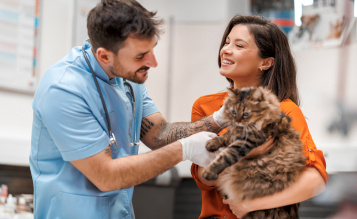
In terms of the BCS chart above, you can easily identify whether your cat is overweight by visually looking at your cat and feeling their body to determine fat cover. In general:
- Overweight cats have a slight excess of fat covering their rib cage, making the ribs less noticeable. Their waist and abdominal fat pads are present but not very obvious. You may not be able to easily identify their waist without feeling for it.
- In obese cats, the ribs are difficult to feel due to the significant fat cover. The waist is absent, and there is a prominent abdominal fat pad. Additionally, fat deposits can be found around the lower back area.
- Severely obese cats have a heavy fat cover, making it challenging to identify the ribs. Their waist is non-existent, with heavy fat deposits on the abdomen, lower back, face, and limbs.
If you identify that your cat could lose a few pounds, you might want to consider putting them on a diet. Managing an overweight cat's diet involves careful planning and consistent monitoring to ensure safe and effective weight loss.
Here are the steps to put an overweight cat on a diet:
1. Consult Your Veterinarian
- Health assessment: Schedule a visit to your veterinarian to assess your cat’s overall health and determine an ideal target weight.
- Customized plan: Obtain a tailored weight loss plan, including recommendations for specific foods and portion sizes.
2. Choose the Right Food
- Low-calorie diet: Select a high-quality, low-calorie cat food designed for weight management. These foods are often higher in protein and fiber to help your cat feel full while reducing calorie intake.
- Portion control: Measure food portions accurately based on your veterinarian's recommendations. Avoid free-feeding and stick to scheduled meal times.
3. Monitor Feeding and Adjustments
- Slow change: Gradually transition your cat to the new diet over 7-10 days to prevent digestive upset. Mix increasing amounts of the new food with the old food until the transition is complete.
Meal frequency: Feed smaller, more frequent meals to help maintain energy levels and reduce hunger. - Treats and extras: Limit treats and avoid feeding table scraps. If you give treats, ensure they are low-calorie and factor them into the daily calorie allowance.
4. Incorporate Joint Supplements into Daily Diet
- A daily dose of joint support: Giving your cat a joint supplement like TRI-ACTA will help protect their joints as they increase physical activity to lose weight.
- Glucosamine, chondroitin, MSM: These key ingredients are a trifecta for joint care, providing enhanced cartilage repair, better lubrication, and anti-inflammatory support for your cat’s joints.
- 100% active ingredients: Choosing a joint supplement like TRI-ACTA that contains 100% active ingredients, meaning no fillers, additives, preservatives, or other inclusions that add calories to the supplement are used, helps provide effective mobility support without the worry that the supplement will contribute to weight gain.
5. Increase Physical Activity
- Playtime: To increase physical activity, engage your cat in regular play sessions with interactive toys like feather wands, laser pointers, and balls.
- Environmental enrichment: Provide climbing structures, scratching posts, and puzzle feeders to encourage natural behaviors and physical activity.
6. Be Patient and Consistent
- Monitor progress: Weigh your cat regularly, ideally, once a week, to track weight loss progress. Adjust the diet and activity levels as needed based on your cat’s progress and the veterinarian’s advice.
- Gradual weight loss: Aim for a slow and steady weight loss of about 1-2% of the cat's body weight per week. Rapid weight loss can be harmful, leading to conditions like hepatic lipidosis.
- Consistency: Stick to the diet and exercise plan consistently to achieve the best results.
7. Hydration
Ensure your cat has access to fresh water at all times. Proper hydration supports overall health and can aid in weight loss.
Tips for Success
- Family involvement: Ensure all family members are on board with the diet plan and do not feed extra treats or food.
- Monitor behaviour: Keep an eye on your cat’s behavior and energy levels. If you notice any changes, consult your veterinarian.
- Adjust as needed: Be prepared to make adjustments to the diet plan as recommended by your veterinarian to continue progress towards a healthy weight.
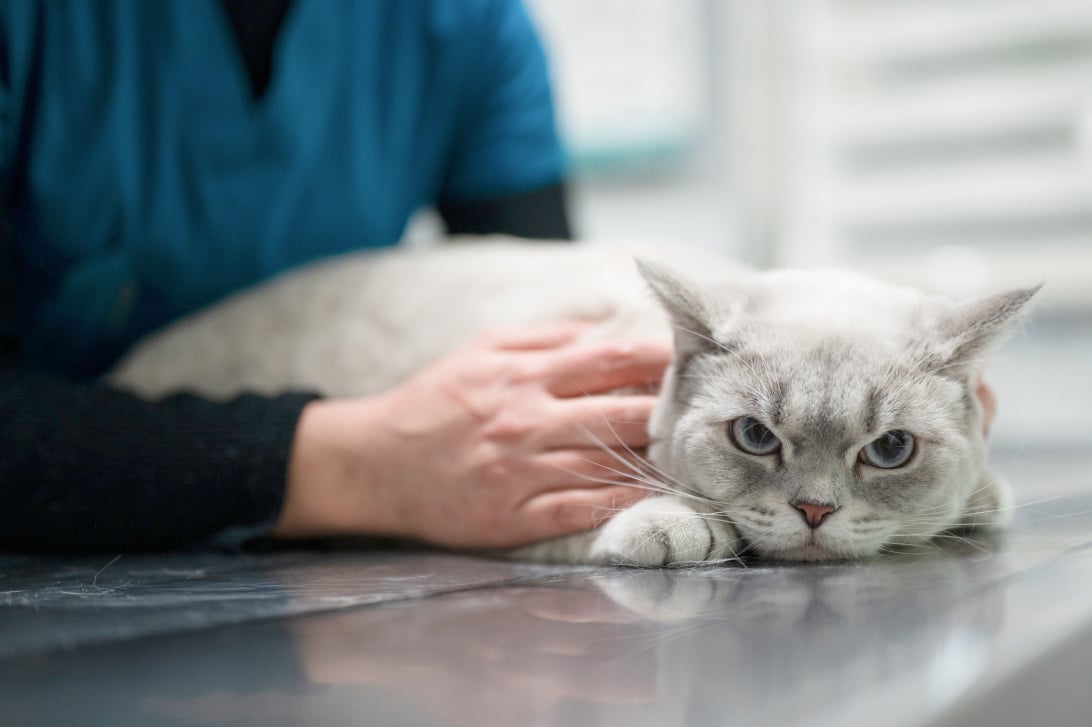
Cat Health Issues: Common Cat Diseases and Symptoms
Understanding common cat diseases and their symptoms can help you identify health issues early and seek prompt veterinary care for your feline friend. Here’s an overview of some prevalent feline health problems:
Diabetes in Cats

Diabetes mellitus is a common endocrine disorder in cats, characterized by the body's inability to regulate blood sugar levels.
This condition often leads to increased thirst, frequent urination, and weight loss despite a good appetite.
Early diagnosis and management are crucial to maintaining your cat's health and quality of life.
Symptoms
- Increased thirst and urination: Drinking more water than usual and frequent urination.
- Weight loss: Despite having a good appetite, cats may lose weight.
- Increased appetite: Often accompanied by weight loss.
- Lethargy: Decreased energy levels and activity.
Management
- Insulin therapy: Regular insulin injections as prescribed by a veterinarian. Usually, once or twice per day.
- Dietary management: High-protein, low-carbohydrate diets to help regulate blood sugar levels.
- Regular monitoring: Blood glucose monitoring at home and regular vet check-ups.
Cat Arthritis

Arthritis is a degenerative joint disease that affects many cats, particularly as they age.
It causes joint pain and stiffness, leading to reduced mobility and activity levels.
Understanding the symptoms of arthritis in cats and implementing appropriate treatments can significantly improve your cat's comfort and well-being.
Symptoms
- Stiffness and lameness: Difficulty moving, especially after rest.
- Reduced activity: Less willingness to jump, play, or climb.
- Behavioral changes: Increased irritability or reluctance to be touched.
Management
- Pain relief: Medications prescribed by a veterinarian, such as NSAIDs.
- Weight management: Keeping the cat at a healthy weight to reduce stress on joints.
- Joint support supplements: Giving glucosamine,chondroitin, and MSM supplements like TRI-ACTA to support joint health.
- Comfortable environment: Providing soft bedding and easy access to favorite spots.
TRI-ACTA H.A. for Pets
Our maximum strength formula is optimally designed to accelerate the formation of cartilage, minimize inflammation, expedite the healing process, and improve joint conditions.

Luxating Patella in Cats

Luxating patella, or dislocation of the kneecap, is a condition that can affect cats, causing intermittent lameness and discomfort.
The severity of this issue can vary and may require different management strategies, including surgery in severe cases.
Recognizing the signs of luxating patella in cats early can help in effective treatment.
Symptoms
- Intermittent lameness: Sudden lameness in one or both hind legs.
- Skipping gait: The cat may skip or hop on one leg.
- Pain: Signs of discomfort or pain, especially after activity.
Management
- Surgical repair: In severe cases, surgery may be necessary to correct the condition.
- Weight management: Keeping the cat at a healthy weight to reduce stress on the knees.
- Supplements: Joint support supplements like TRI-ACTA with glucosamine, chondroitin, and MSM help strengthen joints.
- Pain management: Medications and supplements to alleviate pain and inflammation.
Cat Skin Problems

Cat skin problems are relatively common and can range from mild irritations to serious infections.
Symptoms such as itching, hair loss, and redness can indicate underlying issues like allergies, parasites, or infections.
Proper diagnosis and treatment are essential to alleviate discomfort and prevent complications.
Symptoms
- Itching and scratching: Excessive scratching, biting, or licking.
- Hair loss: Bald patches or thinning fur.
- Redness and inflammation: Red, inflamed skin, often with scabs or sores.
- Dandruff: Flaky skin visible in the fur.
Management
- Flea control: Regular use of flea preventatives.
- Allergy management: Identifying and avoiding allergens and using hypoallergenic diets.
- Medications: Topical or oral medications to treat infections or inflammation.
- Regular grooming: Keeping the cat’s coat clean and brushed.
Autoimmune Disease in Cats

Autoimmune diseases in cats occur when the immune system mistakenly attacks the body's own tissues.
These diseases can affect various organs and systems, leading to a wide range of symptoms.
Early detection and appropriate treatment are critical for managing these complex conditions and improving your cat's quality of life.
Symptoms
- Variable: Symptoms depend on the specific autoimmune disease but can include fever, lethargy, weight loss, and skin lesions.
- Anemia: Pale gums, weakness, and lethargy.
- Organ involvement: Symptoms related to specific organs affected, such as kidney or liver issues.
Management
- Immunosuppressive drugs: Medications to suppress the immune system.
- Supportive care: Treating secondary infections and managing symptoms.
- Regular monitoring: Frequent vet visits to monitor the cat’s condition.
Cat Cancer

Cancer is a serious health issue that can affect cats, presenting in various forms such as tumors or blood cancers.
Symptoms often include lumps, weight loss, and changes in behavior or appetite.
Early detection and treatment options like surgery and chemotherapy can help manage the disease and extend your cat's life.
Symptoms
- Lumps and bumps: Unusual growths or swelling.
- Weight loss: Unexplained weight loss despite a normal diet.
- Lethargy: Decreased energy and activity.
- Changes in appetite: Increased or decreased appetite.
Management
- Surgery: Removal of tumors when possible.
- Chemotherapy/radiation: Depending on the type and stage of cancer.
- Palliative care: Managing symptoms and maintaining quality of life.
Cat Kidney Disease

Kidney disease is a common ailment in older cats, leading to a gradual decline in kidney function.
Symptoms such as increased thirst, frequent urination, and weight loss can indicate this chronic condition.
With early detection and proper management, the progression of kidney disease can be slowed, enhancing your cat's quality of life.
Symptoms
- Increased thirst and urination: Drinking more water and frequent urination.
- Weight loss: Gradual weight loss over time.
- Lethargy: Decreased activity and energy levels.
- Poor coat condition: Dry, unkempt fur.
Management
- Dietary changes: Special renal diets to support kidney function.
- Medications: To manage symptoms and slow disease progression.
- Fluid therapy: Subcutaneous fluids to maintain hydration.
Cat Rabies

Rabies is a viral disease that affects the central nervous system of mammals, including cats.
It is typically transmitted through the bite of an infected animal and is almost always fatal once symptoms appear.
Preventing rabies through vaccination is crucial for protecting your cat and public health.
Symptoms
- Behavioral changes: Sudden aggression, fearfulness, or unusual friendliness.
- Paralysis: Progressive paralysis starting from the hind legs.
- Excessive drooling: Difficulty swallowing and increased saliva production.
- Seizures: Neurological symptoms such as seizures or disorientation.
Management
- Prevention: Regular rabies vaccinations.
- Quarantine: Quarantine and immediate veterinary care are essential if exposure is suspected.
- Euthanasia: Unfortunately, rabies is almost always fatal once symptoms appear, and humane euthanasia may be necessary.

Breed-Specific Health Concerns
Different cat breeds can be predisposed to certain health issues due to their genetics, body structure, or breeding practices. Understanding these breed-specific health concerns can help cat owners provide better care and early intervention when needed.
Munchkin Cat Health Problems
Munchkin cats are known for their short legs due to a genetic mutation that affects bone development. While their unique appearance makes them popular, it also predisposes them to specific health problems.
- Lordosis: A condition where the spine curves downward, putting pressure on internal organs.
- Pectus Excavatum: A chest wall deformity that can impact respiratory and heart function.
- Arthritis: Due to their limb structure, Munchkin cats can be more prone to joint issues and arthritis as they age.

Siamese Cat Health Issues
Siamese cats are popular for their striking blue eyes, slender bodies, and vocal personalities. However, they are also predisposed to certain genetic health problems.

- Respiratory problems: Siamese cats can be prone to respiratory issues and chronic sinusitis due to their head shape.
- Progressive Retinal Atrophy (PRA): A genetic condition that leads to blindness.
- Heart disease: Hypertrophic cardiomyopathy (HCM) is relatively common in Siamese cats.
Persian Cat Health Issues
Persian cats are beloved for their long, luxurious fur and distinctive flat faces. However, their unique features can lead to several health problems.
- Brachycephalic Syndrome: Their flat faces can cause breathing, eye, and dental problems.
- Polycystic Kidney Disease (PKD): A genetic disorder that causes cysts to form in the kidneys, potentially leading to kidney failure.
- Skin problems: Persians are prone to skin conditions due to their dense fur and require regular grooming to prevent mats and infections.

Bengal Cat Health Issues
Bengal cats are known for their wild appearance, resembling miniature leopards. They are generally healthy, but potential owners should be aware of some health issues.

- Hypertrophic Cardiomyopathy (HCM): A common heart condition in Bengal cats that can lead to heart failure.
- Progressive Retinal Atrophy (PRA): Like Siamese cats, Bengals can suffer from this eye condition that can lead to blindness.
- Feline Infectious Peritonitis (FIP): Bengals may have a higher predisposition to this fatal viral disease.
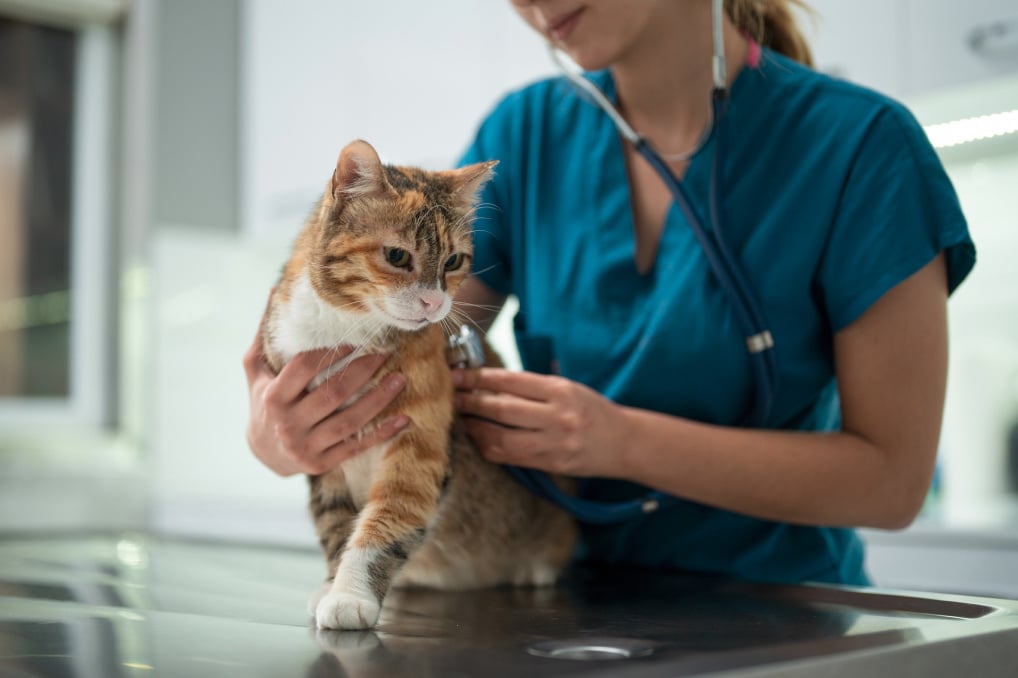
Cat Infections: Symptoms and Causes
Cats can suffer from various infections that can impact their health. Here's an overview of common infections, their symptoms, and causes:
|
Infection Type |
Symptoms |
Causes |
|
|
|
|
Cat UTI (Urinary Tract Infection) |
|
|
|
|
|
|
Ear Infection in Cats |
|
|
|
Cat Nail Infection |
|
|
|
Sinus Infection in Cats |
|
|
|
Post-Surgery: Cat Spay and Cat Neuter |
|
|
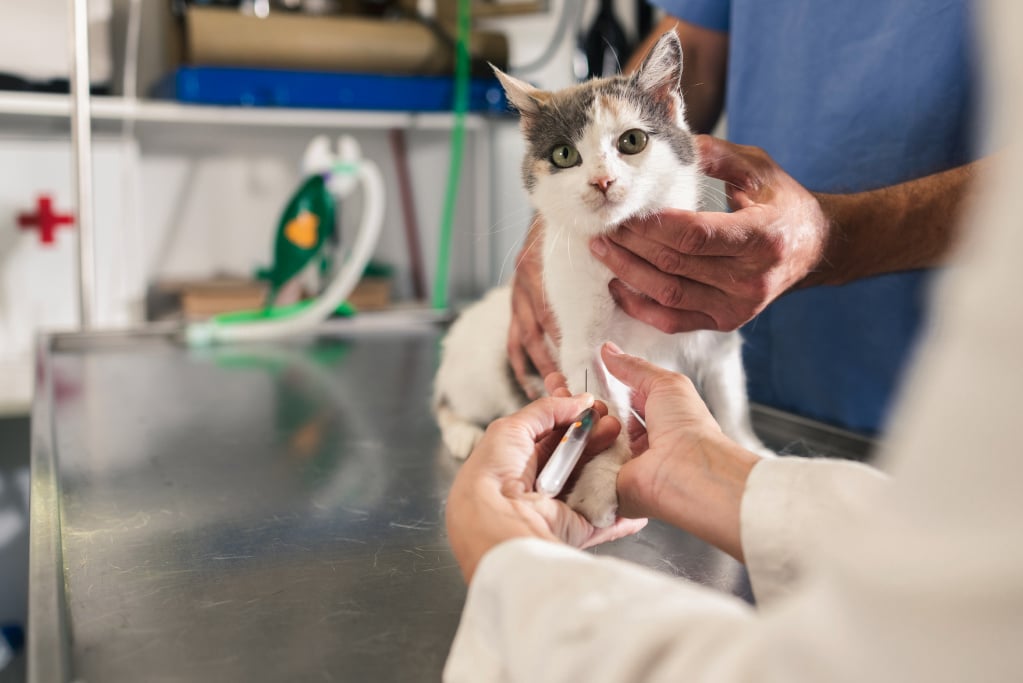
Cat in Pain: Sickness and Injuries
When your cat is in pain, it may not be obvious. This is because cats are master actors, able to mask their pain so that you won’t notice. They do this because, in the wild, a sick member of the herd is a liability, so if the other cats realize an individual is sick, they’ll shun them for fear of attracting predators.
Thankfully, by observing our cats' behaviour and facial expressions, we can better understand how they are feeling. The feline grimace scale is a great resource for helping us know when our kitties need medical attention due to pain.

- A relaxed muzzle, open eyes, whiskers loose and curved, and head held above their shoulders means that your cat is feeling fine.
- When your cat is in moderate pain, you’ll notice that their ears will be slightly pulled apart, their eyes partially closed, and their muzzle a bit tense.
- For cats in a lot of pain, their ears will often be flattened and rotated outward, their eyes will be squinted, their whiskers straight, and their heads will hang below their shoulders.
A myriad of conditions can cause a cat to experience pain. These are a couple of the most common:
Cat Fever

Fever in cats can be a sign of an underlying health issue. Monitoring your cat's symptoms and seeking veterinary care if needed is important. Here are some key points about fever in cats:
Symptoms of Fever in Cats
Common symptoms to watch out for that may indicate your kitty has a fever include:
- Elevated body temperature (normal range for cats is 100.5°F to 102.5°F; fever is typically above 103°F)
- Lethargy and reduced activity
Loss of appetite - Dehydration
- Shivering or rapid breathing
- Warm ears, paws, and abdomen
Cats may sometimes throw up or have diarrhea due to fever. Additional hydration and medications to manage symptoms may be necessary in these cases. Dehydration in cats can be dangerous, so it’s important to take swift action if you suspect that your kitty may be dehydrated.
Common causes of fever in cats include:
- Infections (bacterial, viral, or fungal)
- Inflammatory conditions (e.g., pancreatitis, arthritis)
- Immune-mediated diseases
- Cancer
- Injury or trauma
- Reaction to medication
In some cases, infections can just seem to appear and not have any specific cause. In these cases, treatment doesn’t really change; it just means that you need to keep a closer eye on your kitty to see if you notice any patterns that may help a vet reach a diagnosis if your cat continues to get fevers.
Treatment for fevers in cats often entails:
- Antibiotics for bacterial infections
- Anti-inflammatory medications for reducing fever and inflammation
- Supportive care (e.g., fluids to prevent dehydration)
- Specific treatments for underlying conditions (e.g., cancer therapy, pain management)
Cat Sprains and Injuries

Cats are agile creatures but can still suffer from sprains and injuries. Usually, veterinarians will prescribe NSAIDs (non-steroidial anti-inflammatory drugs) to help alleviate pain (we’ll discuss this more in a later section). In addition, adding a joint supplement like TRI-ACTA to your cat’s diet will help support their sensitive joints as they heal, and provide lasting support as they age. The first step in helping your cat, however, is to assess their injury. Here's how to identify and care for common injuries in cats:
Cat Limping
Causes of cat limping:
- Sprains or strains
- Injuries or fractures
- Arthritis
- Infections or abscesses
- Foreign objects (e.g., thorns, glass)
Symptoms:
- Favoring one leg
- Reduced movement
- Swelling or warmth in the affected area
- Visible wounds or bruises
- Crying or yowling when touched
Treatment:
- Keep the cat calm and restrict movement
- Check for obvious injuries or foreign objects
- Apply a cold compress to reduce swelling
- Add a joint supplement to their diet for additional joint support
- Consult a veterinarian for a proper diagnosis and treatment plan
Cat Paw Injury
Causes:
- Cuts, abrasions, or puncture wounds
- Burns from hot surfaces
- Infections or abscesses
- Foreign objects stuck in the paw
Symptoms:
- Licking or biting the paw
- Swelling or redness
- Bleeding or discharge
- Visible wounds or foreign objects
Treatment:
- Clean the wound with mild soap and water
- Apply an antiseptic (e.g., betadine solution)
- Cover the wound with a clean bandage
- Prevent licking or biting by using an Elizabethan collar
- Add a joint supplement to their daily diet for added joint protection and support
- Seek veterinary care if the wound is severe or doesn’t heal
Cat Sprained Leg
Causes of a cat sprained leg:
- Falls or jumps from heights
- Rough play or accidents
- Twisting or overstretching the leg
Symptoms:
- Limping or avoiding using the leg
- Swelling or tenderness
- Difficulty walking or jumping
- Crying or yowling when the leg is touched
Treatment:
- Rest and restrict movement
- Apply a cold compress to reduce swelling
- Keep the cat in a confined space to prevent further injury
- Incorporate a joint supplement into their diet for added joint support
- Consult a veterinarian for an accurate diagnosis and possible pain management
Cat Tail Injury
Causes:
- Caught in doors or stepped on
- Bites or fights with other animals
- Falls or accidents
- Tail pulled or twisted
Symptoms:
- Drooping or dragging the tail
- Swelling or kinks in the tail
- Visible wounds or fur loss
- Pain or sensitivity when touched
Treatment:
- Keep the cat calm and minimize tail movement
- Clean any wounds with mild soap and water
- Apply an antiseptic to prevent infection
Incorporate a joint supplement into their diet for added joint support - Consult a veterinarian for severe tail injuries or if the tail doesn’t improve
When to See a Veterinarian
- If the injury appears severe or the cat is in significant pain
- If there is persistent bleeding, swelling, or signs of infection
- If the cat’s mobility does not improve within a few days
- If there are signs of a possible fracture or dislocation
Regular check-ups and prompt attention to injuries can help ensure your cat stays healthy and recovers quickly from any mishaps.
Cat Wound Care

When it comes to cat wounds, proper care is essential for healing and preventing infection.
Steps for Wound Care:
- Assess the wound: Check for size, depth, and severity.
- Clean the wound: Use mild soap and water or a saline solution. Avoid using hydrogen peroxide or alcohol, as they can damage tissue.
- Apply antiseptic: Use a vet-approved antiseptic solution (e.g., betadine).
- Bandage the wound: Cover with a sterile bandage to protect from dirt and bacteria.
- Monitor for infection: Look for signs of infection, such as redness, swelling, pus, or a bad odor.
- Prevent licking or biting: If necessary, use an Elizabethan collar to prevent the cat from interfering with the wound.
When to See a Veterinarian
- If the wound is large, deep, or bleeding heavily.
- If there are signs of infection or if the wound doesn’t heal within a few days.
- If the cat shows signs of severe pain, lethargy, or decreased appetite.
- If there are any concerns about the cat’s response to supplements, medications, or therapies.
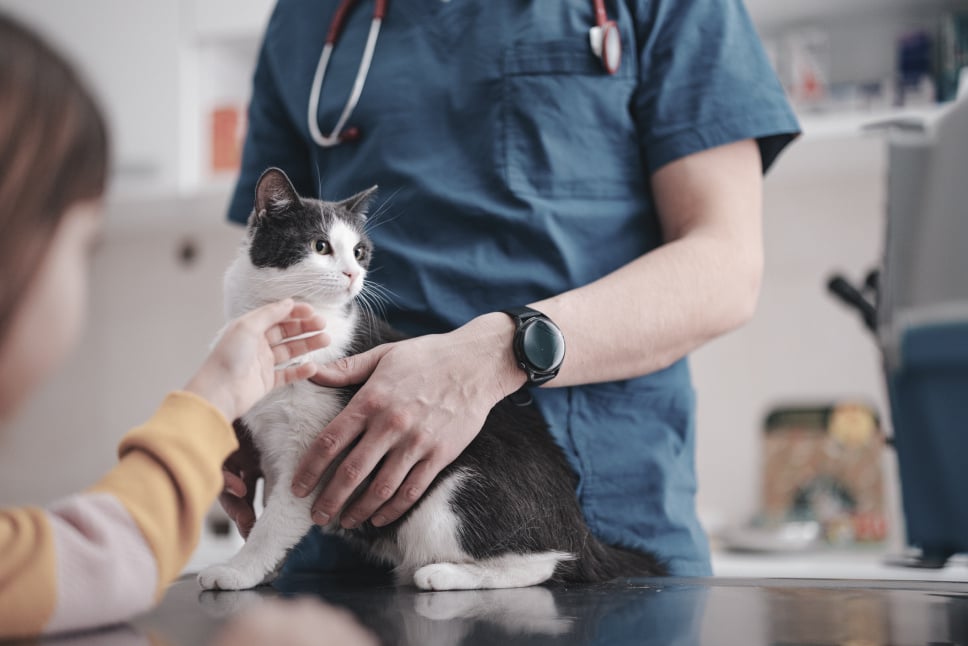
Cat Pain Management and Treatments
Managing pain in cats involves a combination of medications, supplements, and alternative therapies. Here is some insight into different ways to manage and treat cat pain.
NSAIDs and Medication
Veterinarians often prescribe non-steroidal anti-inflammatory drugs (NSAIDs) specifically designed for cats to alleviate their pain. However, these medications can have adverse side effects, so following the vet's instructions is crucial.
Side Effects of Cat Pain Medication
NSAIDs are developed to manage fever, swelling, headaches, and other inflammatory responses in animals, including cats. They work by affecting the production of certain substances in the body, particularly prostaglandins, which play a role in inflammation and pain.
While NSAIDs formulated for cats are effective in managing pain, they can have some unwanted side effects, especially with prolonged use. These side effects may include:
- Vomiting
- Diarrhea
- Loss of appetite
- Lethargy
- Ulcers in the stomach and intestines
Not all cats will experience these side effects, and some may only show mild symptoms initially as their bodies adjust to the medication.
Cat Supplements
If your cat has chronic pain, you might be wondering if there is an alternative to NSAIDs that you can give them. After all, the longer that a cat is on NSAIDs, the more the risk of adverse effects increases.
Supplements can significantly enhance your cat's overall health by boosting their immune system, supporting digestive health, improving skin and coat condition, and protecting their joints. A joint supplement like TRI-ACTA H.A. is an excellent choice for cats suffering from chronic joint pain or recovering from a joint injury or surgery. This supplement combines glucosamine, chondroitin, MSM (a natural pain reliever), and hyaluronic acid to offer joint protection and alleviate pain, helping your cat return to their normal self. Additionally, TRI-ACTA H.A. can be used alongside NSAIDs to lower the required dosage of painkillers for your cat.

TRI-ACTA H.A. for Pets
Our maximum strength formula is optimally designed to accelerate the formation of cartilage, minimize inflammation, expedite the healing process, and improve joint conditions.

Alternative Therapies
Just like humans, cats can benefit from physical therapy, hydrotherapy (where they are placed in a shallow pool with a treadmill to support their joints as they walk or swim), massage, acupuncture, and laser therapy (which uses light pulses to promote healing) to manage their pain. These alternative therapies can often be used alongside NSAIDs, similar to joint supplements, to help reduce the required dosage of NSAIDs.
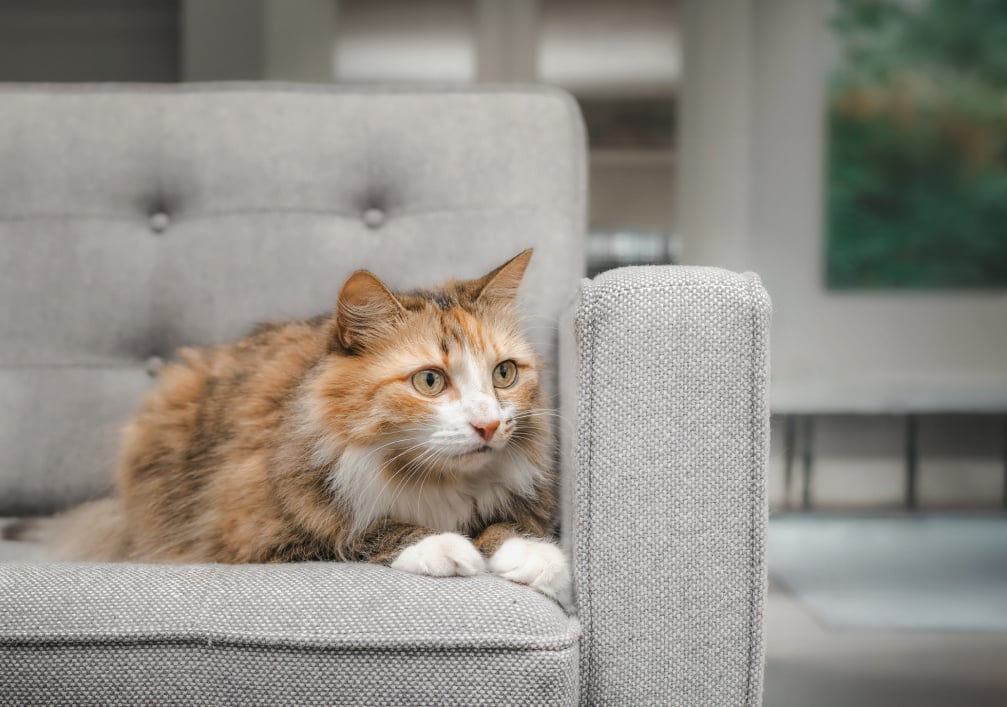
Special Cat Care Considerations By Age
Caring for cats requires attention to their specific needs at different stages of life. Here are some key considerations for both old cats and kittens.
Senior Cats

As cats age, their needs change, requiring more specialized care to ensure they stay healthy and comfortable.
Senior cats are more prone to health issues such as arthritis, kidney disease, and dental problems.
Providing proper care, a balanced diet and a stress-free environment can significantly improve their quality of life.
Health Monitoring
- Regular vet visits: Schedule bi-annual check-ups to monitor for age-related health issues such as arthritis, kidney disease, and dental problems.
- Weight management: Keep an eye on weight, as obesity can exacerbate health issues. Ensure they have a balanced diet suitable for older cats.
- Mobility aids: Provide ramps or steps to help them access favourite spots, as they may struggle with jumping or climbing.
- Comfortable bedding: Offer soft, warm bedding to support their joints and keep them comfortable.
Diet and Nutrition
- Special diet: Feed them a diet formulated for senior cats, which often includes joint support, easily digestible proteins, and balanced nutrients.
- Hydration: Ensure they have constant access to fresh water, as older cats are more prone to dehydration and kidney problems.
- Joint supplements: Incorporating joint supplements into your senior cat’s diet that include key ingredients like glucosamine, chondroitin, and MSM will help support their aging joints and enhance mobility.
Mental and Emotional Well-being
- Mental stimulation: Provide interactive toys and engage in gentle play to keep their mind active.
- Stress reduction: Maintain a stable environment and minimize changes to reduce stress.
Kittens

Kittens are bundles of energy and curiosity, needing different care practices compared to older cats.
Ensuring they receive proper nutrition, safety, and socialization is crucial during this developmental stage.
Addressing their unique needs can help them grow into healthy, well-adjusted adult cats.
Health Monitoring
- Vet visits: Schedule regular vet visits for vaccinations, deworming, and health checks.
- Spaying/neutering: Plan to spay or neuter around 5-6 months of age to prevent unwanted litters and reduce certain health risks.
Diet and Nutrition
- High-quality kitten food: Feed them a diet specifically formulated for kittens, rich in essential nutrients for growth and development.
- Frequent meals: Kittens need multiple small meals throughout the day to support their high energy needs.
Safety and Training
- Safe environment: Kitten-proof your home to prevent access to dangerous objects or substances.
- Litter training: Start litter training early, providing a clean and accessible litter box.
- Socialization: Introduce them to various environments, people, and other pets to encourage proper social development.
Mental and Physical Stimulation
- Playtime: Provide plenty of toys and engage in play to develop their physical coordination and mental agility.
- Scratching posts: Offer scratching posts to satisfy their natural urge to scratch and protect your furniture.

Conclusion
Caring for a cat involves understanding their unique needs at different life stages, from playful kittens to graceful seniors. Providing top-tier feline care means ensuring regular health check-ups, offering a balanced diet tailored to their age, and creating a safe and stimulating environment. You can significantly enhance your cat's quality of life by paying attention to their needs, managing pain through proper medications and supplements, and addressing any injuries or illnesses promptly. Whether it's a kitten's playful antics or a senior cat's serene companionship, dedicated care and attention will help your feline friend lead a happy and healthy life.
Discover the joint-support benefits of TRI-ACTA by starting your cat on our supplement today. Purchase TRI-ACTA online or learn where to buy at a store near you.
TRI-ACTA for Pets
A proactive approach for developing and younger adult pets to maintain optimal joint health mobility, minimize inflammation and fend off age-related ailments.



